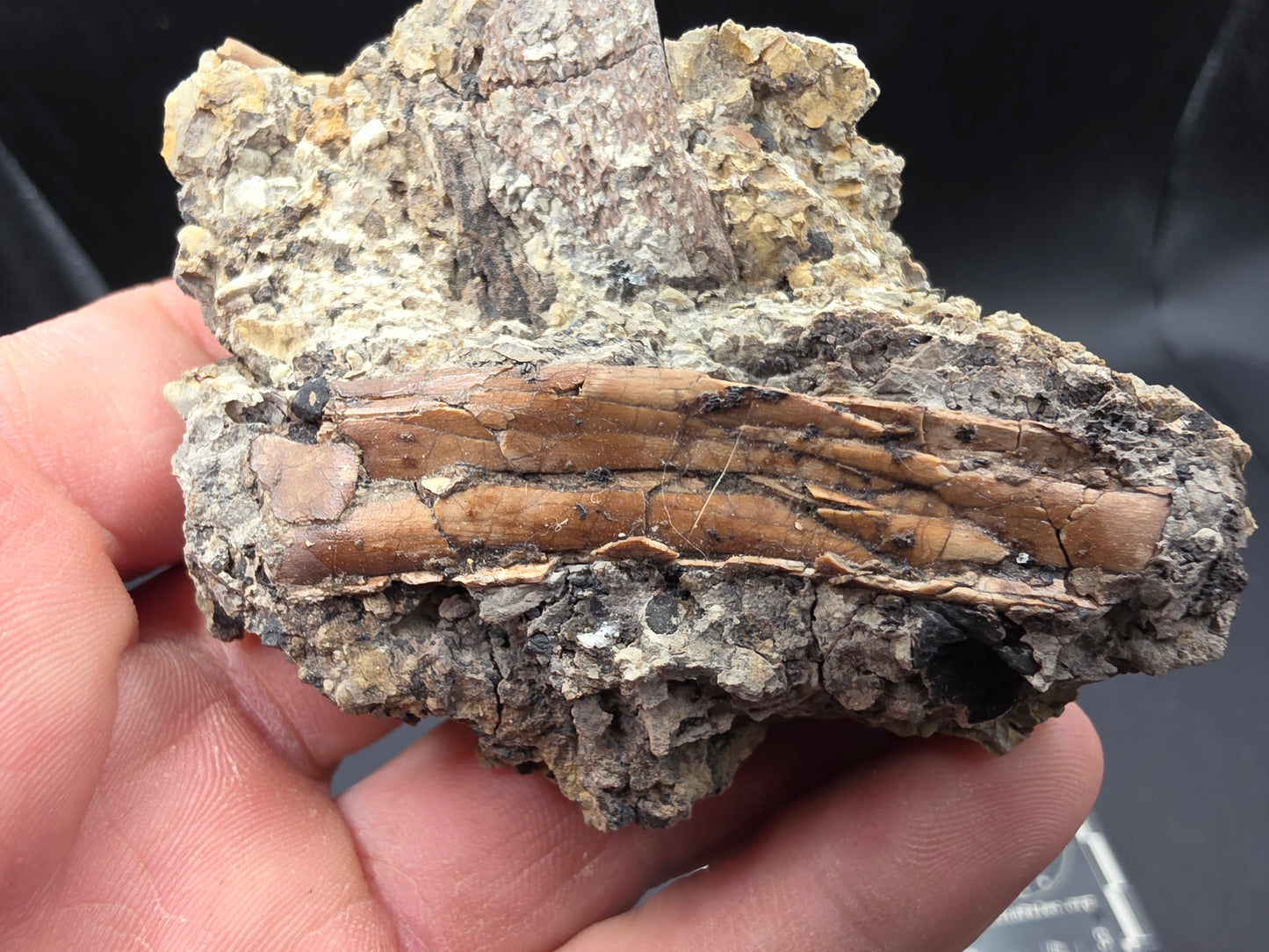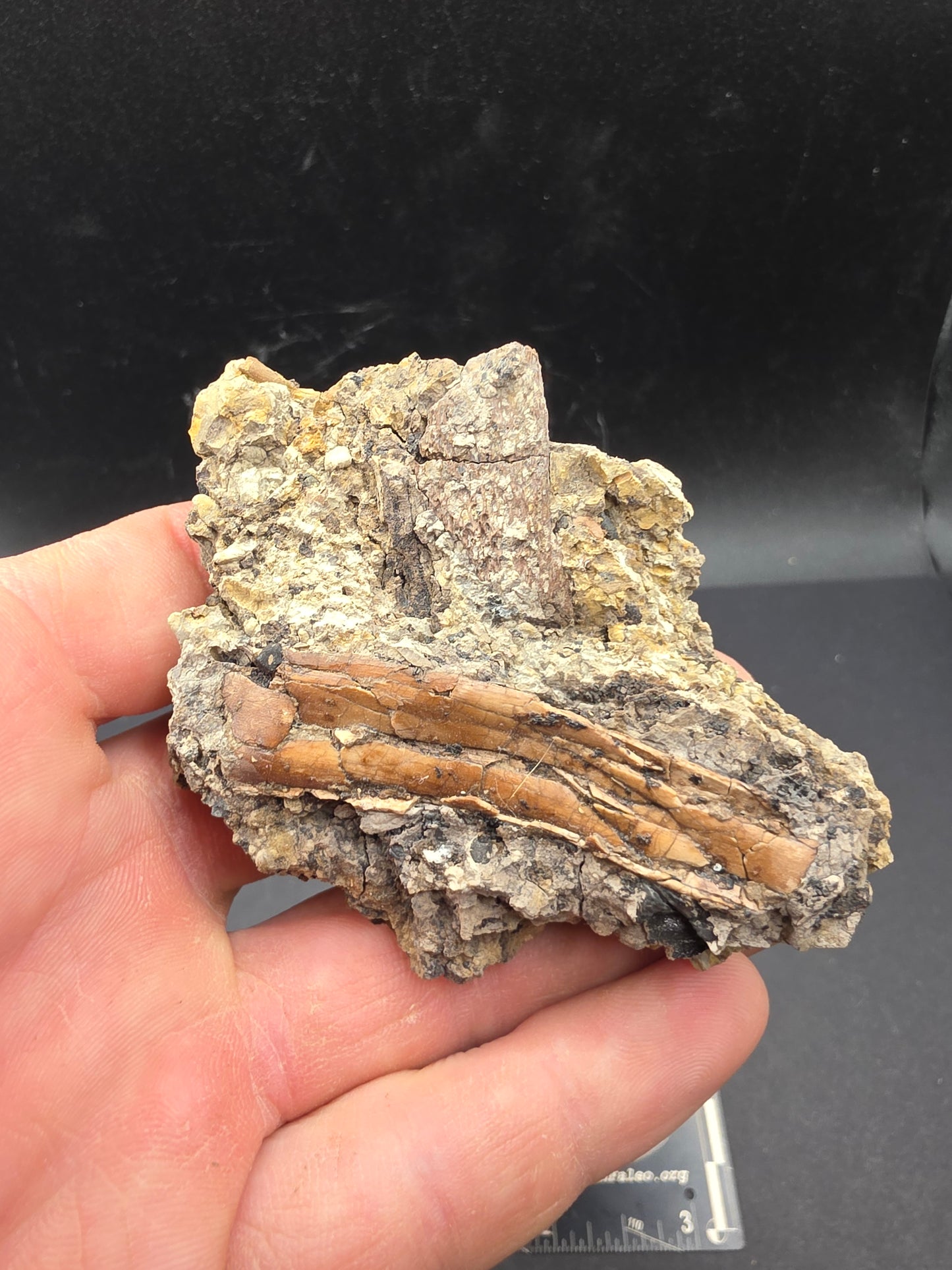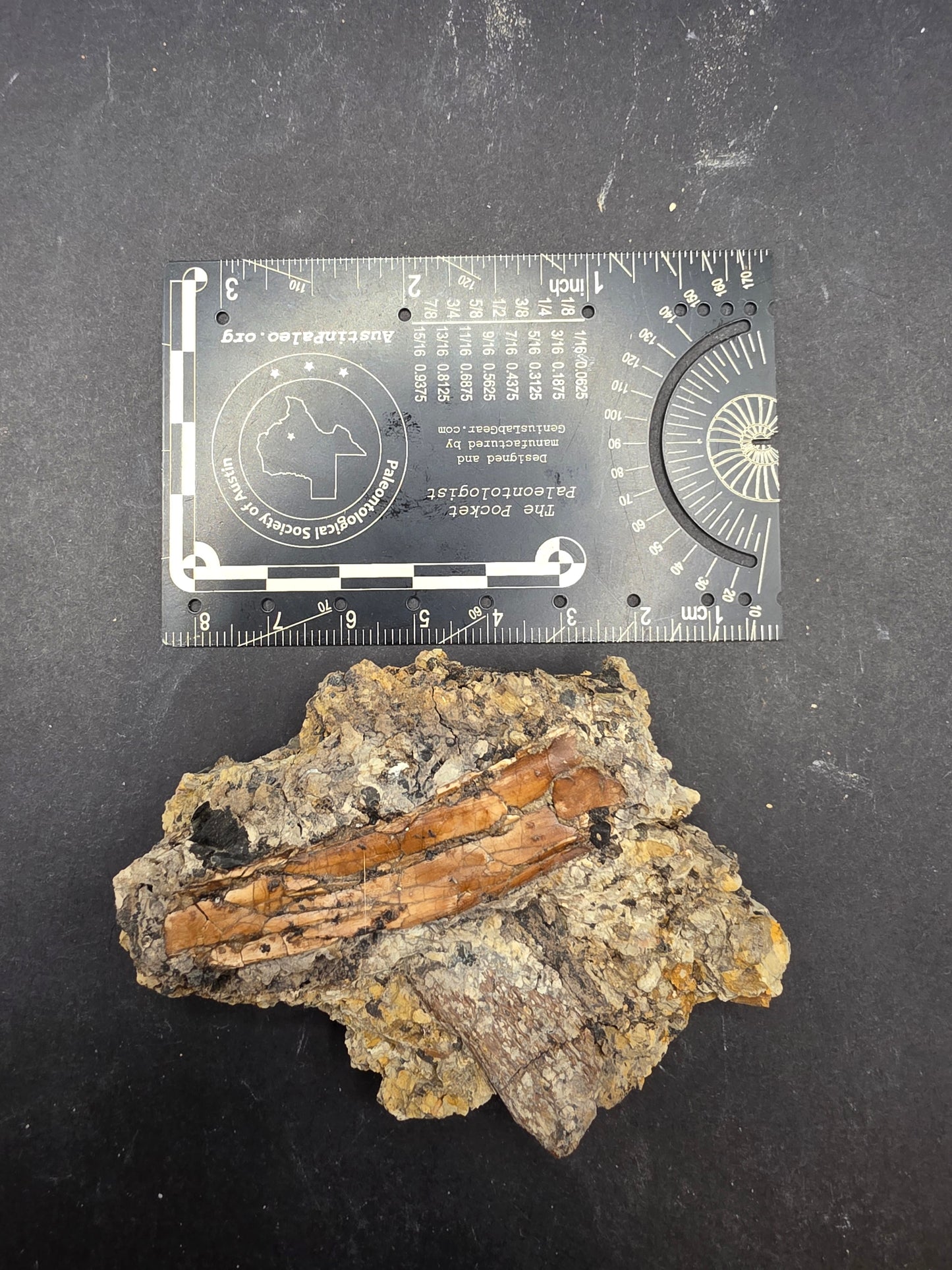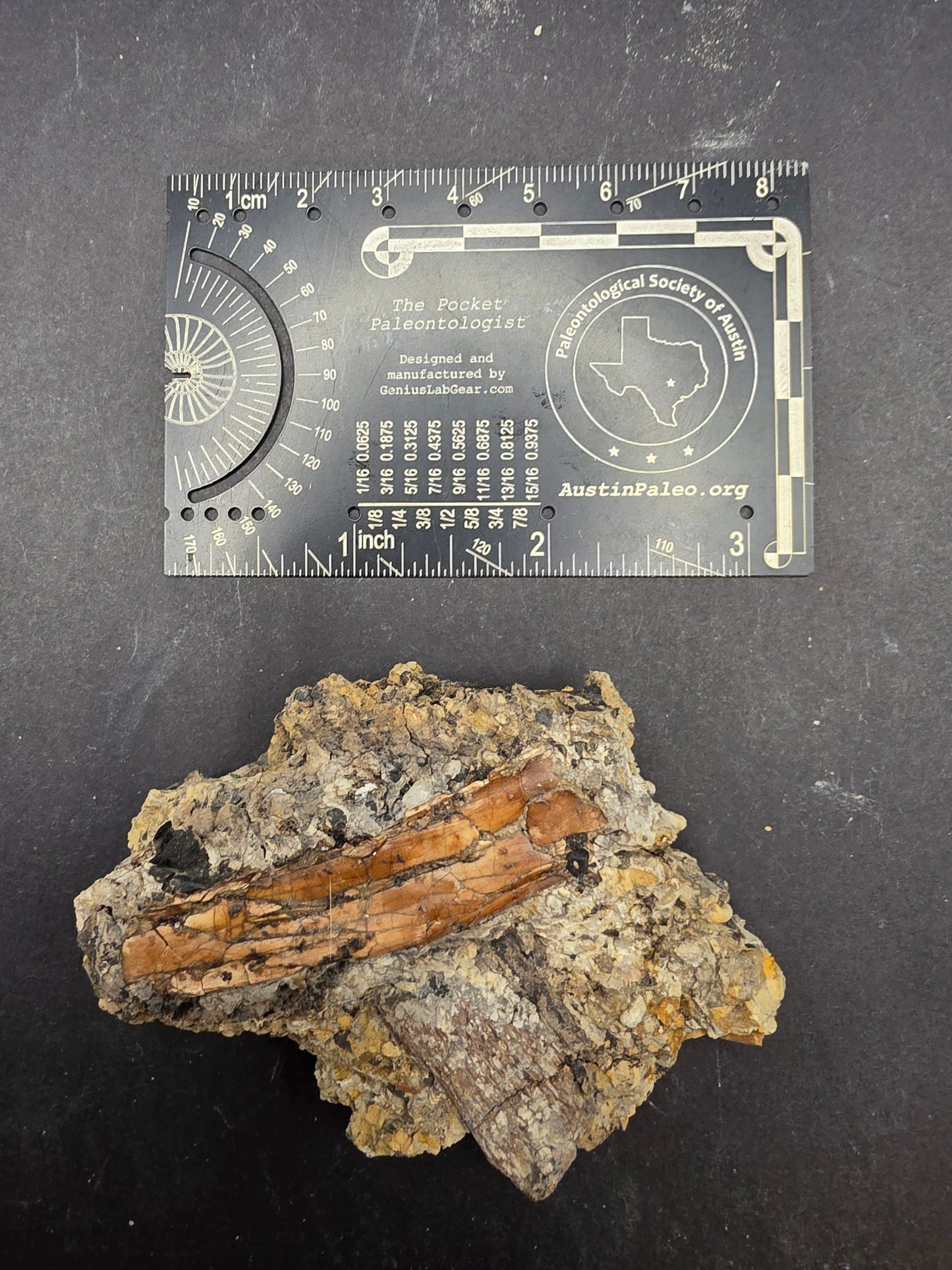Minute Man Fossils
Pterosaur Bone-Texas
Pterosaur Bone-Texas
Couldn't load pickup availability
Taxa: Indeterminate Pterosaur
Element: Indeterminate Bone
Geology: Aguja formation
Age: Cretaceous-Campanian
Locality: Brewster County, Texas
Pterosaurs
Pterosaurs were flying reptiles that lived alongside dinosaurs during the Mesozoic era. Although not dinosaurs themselves, they were closely related and shared the same ecosystems. Pterosaurs had a wide range of sizes, from small species with wingspans of just a few feet to massive ones like Quetzalcoatlus, whose wingspan could exceed 30 feet. Their wings were formed by a membrane of skin stretched between an elongated fourth finger and the body. They were diverse in diet and behavior, with some being fish-eaters, others scavengers, and some even feeding on land animals or small vertebrates. Pterosaurs are typically distinguished by their long, toothless beaks and large, often specialized wingspans, and they are found in many fossil sites worldwide, including coastal, inland, and marine environments.
Pterosaurs from the Aguja Formation are represented by fragmentary fossil evidence, primarily from Late Cretaceous deposits in West Texas. These flying reptiles would have shared the ecosystems with various dinosaurs and other prehistoric creatures in the region. The exact species from the Aguja Formation remain uncertain, but pterosaurs from this period were likely similar to those found in other Late Cretaceous environments, such as the Pteranodontidae or Pterodaustro groups, known for their long wingspans and specialized feeding strategies. They would have likely inhabited coastal and riverine habitats, feeding on fish or other small prey. Their remains offer valuable insights into the diverse fauna of the time.
Aguja formation
The Aguja Formation is a Late Cretaceous geological formation in West Texas, primarily exposed in the Big Bend National Park region. It dates to the Campanian stage (approximately 80–72 million years ago) and consists of fluvial, coastal, and deltaic deposits. The formation preserves a diverse fossil record, including dinosaurs such as hadrosaurs, ceratopsians, pachycephalosaurs, tyrannosaurs, and dromaeosaurs, as well as turtles, crocodilians, and early mammals. The Aguja Formation provides important insights into the ecosystems of North America during the Late Cretaceous, showing a rich and varied landscape of rivers, floodplains, and coastal environments.
Share




Subscribe to our emails
Be the first to know about new collections and exclusive offers.




